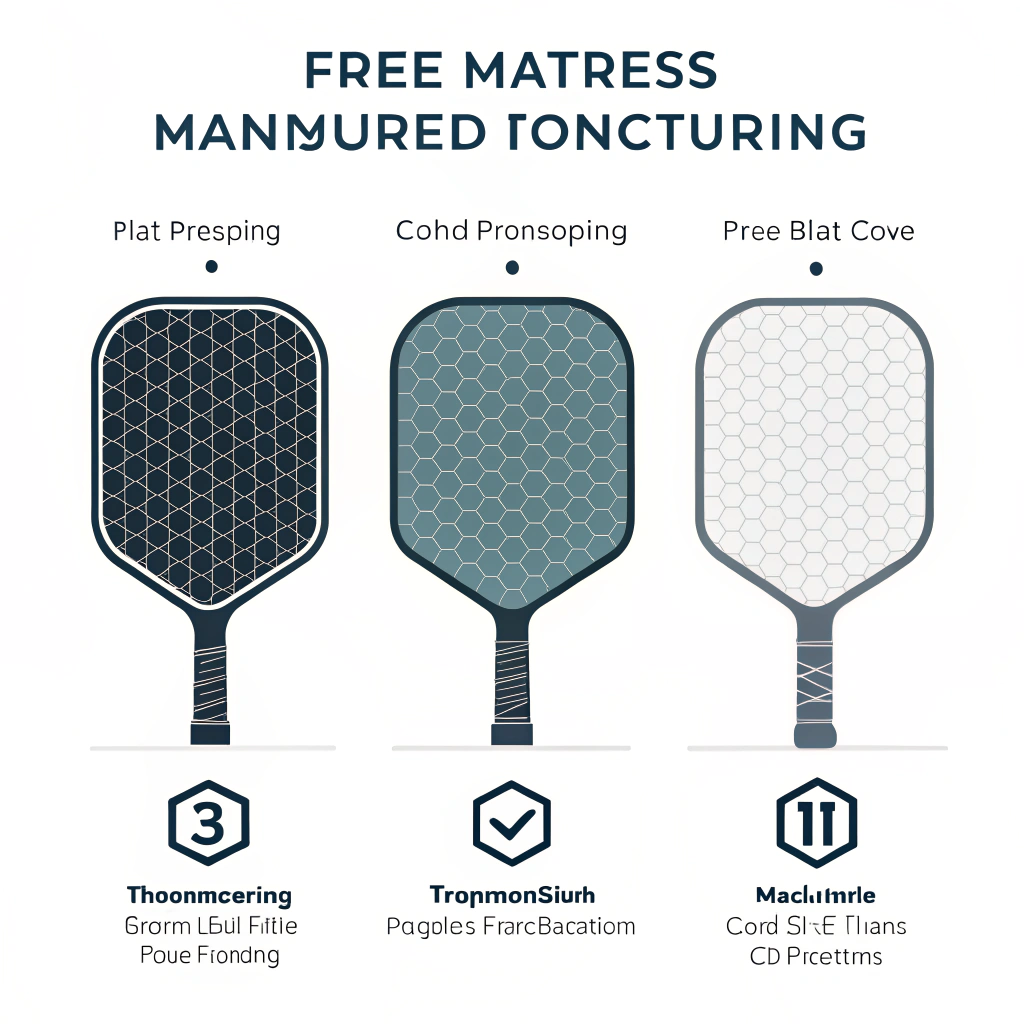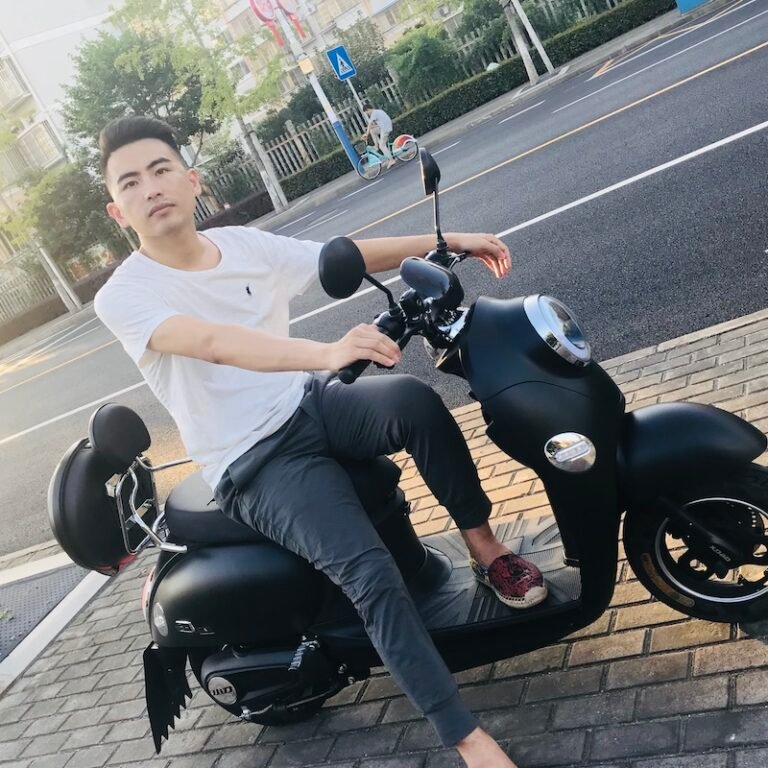A quick answer: Today’s top pickleball paddle brands distinguish themselves largely through advanced manufacturing techniques and premium materials, ensuring high performance, exceptional durability, and tailored performance for diverse playing styles.
In the competitive world of pickleball, paddle brands are continually evolving to meet the exacting standards of players and businesses alike. For B2B procurement managers and product sourcing specialists, making an informed decision means looking closely at manufacturing nuances, the quality of materials used, and performance metrics. This article dives deep into the manufacturing processes and core design elements that set leading paddle brands apart. We will also compare key technologies such as hot pressing1, cold pressing2, and thermoforming3.
Pickleball paddle performance relies heavily on both the design and the quality of production. Paddle quality can be observed in aspects like vibration reduction, rebound force, weight balance, and longevity. With advanced materials (like various forms of carbon fiber4, fiberglass, and innovative core composites), manufacturers can often fine-tune these aspects to deliver paddles that cater to both high-performance competitive play and recreational use.
One of the pivotal aspects that separates top pickleball paddle brands is the production process. At the heart of paddle manufacturing are three primary techniques:
Hot pressing1 involves heating materials and applying significant pressure to form the paddle. This technique is favored for its efficiency in mass production and its ability to ensure high structural integrity.
-
Advantages:
- High production efficiency suitable for large-scale manufacturing.
- Creates sturdy paddles with excellent impact resistance.
- Ensures consistent structural integrity.
-
Disadvantages:
- High initial equipment investment.
- Slight alteration of some material properties which may affect the “feel” of the paddle.
Cold pressing2 is performed at room temperature, applying mechanical pressure that allows for precise control over the thickness and structure. This process maintains the inherent properties of the raw material, offering a softer, more controlled impact response.
-
Advantages:
- Maintains natural material properties for a better ball feel.
- Allows precise control over paddle design.
- Ideal for generating a balanced weight distribution.
-
Disadvantages:
- Lower production efficiency compared to hot pressing.
- Requires highly controlled equipment for consistent results.
Thermoforming3 is used in manufacturing paddles with complex geometries. The material is heated to a softening point and then molded into shape, ensuring precision distribution of materials across the paddle.
-
Advantages:
- Accommodates intricate designs and precise material distribution.
- Maintains paddle stability, enhancing performance.
- Ideal for premium or custom-made paddle lines.
-
Disadvantages:
- Higher equipment costs.
- Longer production cycles.
Manufacturers like NEX Pickleball leverage these processes to create paddles that not only perform exceptionally well but also meet the rigorous standards needed for B2B sourcing. Such technical capabilities enable them to offer paddles that can be fine-tuned for durability, performance, and ergonomic comfort.
For procurement decision-makers, evaluating pickleball paddle brands involves a multi-dimensional comparison of manufacturing processes, material quality, and performance metrics. Here, we compare several leading producers from a technical perspective:
| Feature | Hot Pressing Paddles | Cold Pressing Paddles | Thermoformed Paddles |
|---|---|---|---|
| Production Efficiency | High – Suitable for large-scale orders | Moderate – Slower but controlled | Low – Best for premium, custom orders |
| Material Integrity | Slightly altered properties due to heat | Retains natural material properties | Precisely distributed materials |
| Impact Resistance & Durability | High – Excellent structural strength | Good – Balanced impact response | High – Precise design enhances stability |
| Customization Potential | Limited – Standard designs | Moderate – Some design flexibility | High – Ideal for complex, innovative designs |
| Cost-Effectiveness | Economical for bulk manufacturing | Higher labor costs due to longer cycles | Premium pricing, niche market application |
This table not only reflects the advantages and disadvantages of each manufacturing technique but also underlines the critical considerations for B2B partners. Such data is essential when planning large-scale orders, particularly when paddle performance and longevity are paramount for both end-users and distributor credibility.
Leading brands invest heavily in research and development to incorporate the latest material innovations into their paddles. Both the facing material and the core greatly influence paddle performance:
-
Carbon Fiber Varieties:
- 3K Carbon Fiber4: Offers excellent strength and flexibility, ensuring a high rebound force and durability.
- 12K Carbon Fiber: Provides a smoother surface, enhanced hardness, and superior durability—ideal for competitive play.
- T300 Carbon Fiber: Balances weight and strength, perfect for paddles needing both speed and precision.
-
Fiberglass:
- E-Glass Fiberglass: Known for its elasticity and tensile strength, providing players with improved ball control and a wider sweet spot.
-
Composite Materials:
- Carbon Fiber and Fiberglass Composite: Combines the benefits of both materials, giving players the best of power and control.
- Bamboo Core Composite: Delivers a lightweight design while offering outstanding impact resistance.
- Honeycomb Core Options: With polymer or pulp variants, these cores offer excellent shock absorption, reducing vibration for a smoother hitting experience.
The integrity and feel of the paddle are often tied to the material chosen for the core. Options include:
- Nomex Honeycomb5: Known for superior shock absorption and durability, ideal for high-intensity play.
- Aluminum Honeycomb: Provides a balanced mix of power and precision.
- Polymer Honeycomb: Favored by recreational players for its elasticity and vibration reduction.
By integrating these advanced materials with precise manufacturing processes, industry leaders, including NEX Pickleball – a trusted OEM for brands like Joola and Selkirk – ensure their paddles meet the exacting demands of performance sports.
For B2B sourcing, beyond manufacturing and material quality, performance metrics provide a critical basis for decision-making. Key performance indicators include:
- Durability: Resistance to wear and tear, measured through repeated stress tests.
- Ball Control: Evaluated by the paddle’s ability to manage spin and rebound during play.
- Vibration Reduction: Measured to ensure that the paddle minimizes shock transmitted to the player’s hand.
- Weight Distribution: Ensures a balanced hit, affecting the speed and control during gameplay.
Adopting these metrics in a controlled testing environment helps validate product performance claims. Companies like NEX Pickleball subject each paddle to rigorous stress and performance testing to certify that every paddle performs as expected on the court.
A recent case study examined the integration of cold pressing2 versus hot pressing1 in paddle manufacturing. Two production batches – one using cold pressing and another using hot pressing – were compared in terms of product consistency, durability, and player satisfaction.
-
Cold Pressed Batch:
- Exhibited superior ball control and precision.
- Rated higher by players needing enhanced touch sensitivity.
- Production required a longer lead time, impacting scalability.
-
Hot Pressed Batch:
- Significantly more durable with excellent impact resistance.
- More cost-effective in large volume orders.
- Slight compromise on the tactile feedback compared to cold pressed options.
The study concluded that while both manufacturing techniques are viable, the choice should ultimately align with the brand’s market positioning. Premium, bespoke product lines tend toward thermoforming3 or cold pressing, whereas mass-market products benefit from the efficiency and durability of hot pressing.
Such detailed assessments allow B2B procurement managers to align their sourcing choices with their strategic objectives effectively.
For procurement managers aiming to partner with a reliable pickleball paddle manufacturer, consider the following action steps:
- Evaluate Manufacturing Techniques: Look into the benefits of hot pressing, cold pressing, and thermoforming relative to your market needs and customer expectations.
- Examine Material Quality: Ensure the materials, from various carbon fibers to fiberglass and composite cores, meet specific performance metrics.
- Review Real-World Testing Data: Ask for detailed performance reports, including durability, ball control, and weight distribution tests.
- Request Customization Options: Explore manufacturers that offer tailored design specifications to cater to niche market demands.
- Consider Scalability and Cost: Balance the manufacturing technique with production efficiency and cost-effectiveness to meet your volume requirements.
In conclusion, selecting the right pickleball paddle brand for your portfolio demands a careful balance between manufacturing precision, material quality, and performance consistency. With detailed insights into advanced production techniques and material innovations, B2B partners can make strategic decisions, aligning their product offerings with market trends and customer performance expectations.
Q: What are the top pickleball paddle brands?
A: The top pickleball paddle brands are recognized for their innovative manufacturing techniques and high-performance materials. These brands include industry leaders that utilize advanced processes such as hot pressing, cold pressing, and thermoforming to ensure superior durability, ball control, and impact resistance. They consistently deliver products that meet the high standards of both recreational and competitive players.
Q: What is the best budget pickleball paddle brand?
A: Budget-friendly pickleball paddle brands achieve a balance by optimizing manufacturing processes and material choices to offer reliable performance at lower costs. These brands focus on cost-effective production methods while still providing adequate durability and control for beginner to intermediate level players.
Q: What is a high quality pickleball paddle?
A: A high quality pickleball paddle is one that combines premium materials like advanced carbon fiber or durable composites with precise manufacturing techniques. Such paddles ensure excellent control, power, and reduced vibration, making them suitable for a wide range of skill levels while maintaining long-lasting performance.
-
Hot pressing: Click to learn about this high-efficiency manufacturing technique that uses heat and pressure to enhance structural integrity during production. ↩ ↩2 ↩3
-
Cold pressing: Click to explore the process of cold pressing, which maintains natural material properties for a superior ball feel and precision control. ↩ ↩2 ↩3
-
Thermoforming: Click to discover how thermoforming allows for complex shaping of materials, enabling custom designs and optimal material distribution. ↩ ↩2 ↩3
-
Carbon fiber: Click to delve into various carbon fiber types and understand their role in balancing strength, flexibility, and durability in high-performance applications. ↩ ↩2
-
Nomex Honeycomb: Click to learn about Nomex honeycomb, a core material known for its exceptional shock absorption and durability in high-intensity sports equipment. ↩







